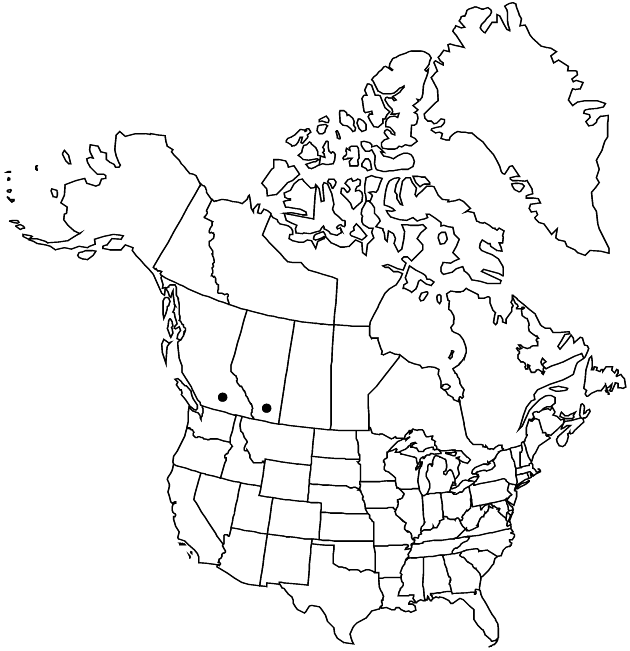Erigeron pallens
Brittonia 6: 240. 1947.
Perennials, 2–6 (–10) cm; taprooted, caudices diffuse with extensive systems of rhizomelike, relatively long and slender branches. Stems erect (simple, ± scapiform), sparsely hirsuto-villous, minutely glandular. Leaves mostly basal (persistent); blades oblanceolate to spatulate, 10–25 × 2–4 mm, margins entire or shallowly 3-lobed apically (apices obtuse to nearly truncate), faces sparsely villous, minutely glandular. Heads 1. Involucres 6–8 × 9–13 mm. Phyllaries in 2–3 series (commonly purplish or purple at tips), sparsely villous (hairs often becoming tawny, without purple cross-walls), minutely glandular. Ray-florets 50–60; corollas white to pink or purplish, 4–5 (–6) mm, laminae (filiform, ca. 0.5–0.8 mm wide, involute) erect, not coiling or reflexing. Disc corollas 3.5–5 mm. Cypselae (mature length not observed), 2-nerved, faces sparsely strigose; pappi: outer of setae, inner of 25–30 (tawny-white to yellowish) bristles. 2n = 18.
Phenology: Flowering Jul–Aug.
Habitat: Alpine talus or other steep, dry, sparsely vegetated slopes
Elevation: 2000–2200 m
Discussion
Erigeron pallens is known only from southeastern British Columbia and southwestern Alberta. Arctic plants previously identified as E. pallens mostly are E. denalii.
Selected References
None.
